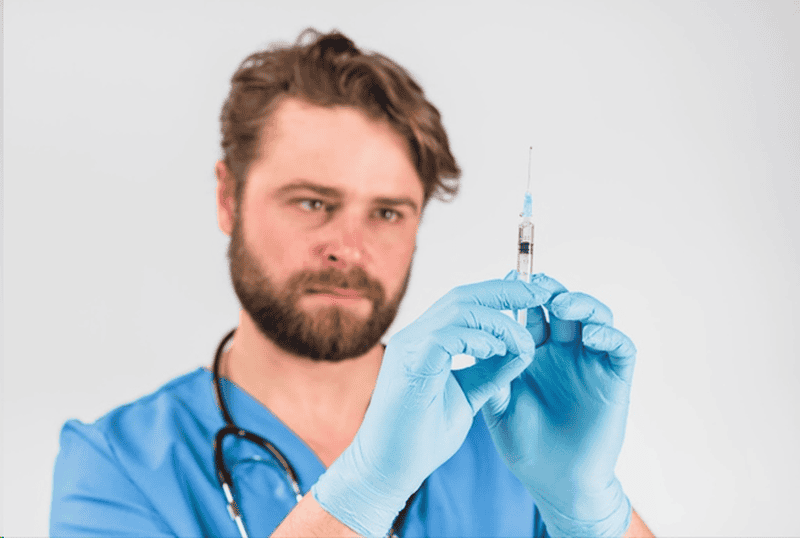Testosterone, often referred to as the “male hormone,” plays a crucial role in various bodily functions, including muscle mass, bone density, sexual desire, and mood regulation. However, several factors can lead to a decrease in testosterone levels, resulting in various symptoms and health issues. Here are some signs that may indicate the need for testosterone replacement therapy (TRT):
6 Signs That You Need Testosterone Replacement Therapy (TRT)
1. Low Testosterone Levels
The most obvious indication for testosterone replacement therapy is clinically low levels of testosterone, also known as hypogonadism. Symptoms of low testosterone include fatigue, reduced libido, erectile dysfunction, and loss of muscle mass.
2. Age-related Decline
As men age, their testosterone levels naturally decrease. While this decline is a normal part of aging, some men may experience a decrease in muscle mass and overall satisfaction with life due to severe symptoms that warrant TRT. However, it’s crucial to differentiate between age-related decline and pathological hypogonadism.
3. Chronic Illnesses
Certain chronic conditions, such as obesity, type 2 diabetes, and metabolic syndrome, have been associated with low testosterone levels. In these cases, addressing the underlying health issue may also involve testosterone replacement therapy.
4. Testicular Disorders
Disorders affecting the testicles, such as Klinefelter syndrome or undescended testicles, can disrupt testosterone production, leading to hypogonadism. Testosterone replacement therapy may be necessary to supplement testosterone levels in such cases.
5. Chemotherapy or Radiation Therapy
Cancer treatments like chemotherapy and radiation therapy can damage the testes and impair testosterone production. Testosterone replacement therapy may help alleviate the symptoms of hypogonadism resulting from these treatments.
6. Pituitary Disorders
Malfunction of the pituitary gland can disrupt the production of testosterone-regulating hormones, leading to hypogonadism. In such cases, restoring testosterone levels may be necessary.
While these are common signs for testosterone replacement therapy (TRT), it’s crucial to seek advice from a medical professional to determine if it’s suitable for individual circumstances. Additionally, the decision to undergo TRT should consider potential risks and benefits, as well as other treatment options available.
Key Considerations Regarding Regimen And Frequency

Determining the appropriate regimen and frequency of testosterone replacement therapy (TRT) is crucial for achieving optimal results while minimizing side effects. The prescription and frequency may vary depending on factors such as the severity of testosterone deficiency, age, overall health, and treatment goals. Here are some key considerations regarding regimen and frequency:
1. Initial Evaluation
Before starting TRT, individuals undergo comprehensive evaluations, including blood tests to measure testosterone levels and assess overall health. Based on these evaluations, healthcare professionals determine the appropriate starting regimen and frequency of TRT.
2. Starting Prescription
The initial prescription of testosterone for TRT typically ranges from 50 to 100 milligrams (mg) administered either intramuscularly, subcutaneously, or topically. However, the starting prescription may vary depending on individual factors.
3. Monitoring and Adjustments
After initiation, individuals have regular follow-up appointments to monitor testosterone levels and assess treatment response. Based on these evaluations, healthcare providers may adjust the regimen and frequency of TRT to achieve optimal results.
4. Long-acting Formulations
Long-acting formulations of testosterone, such as testosterone enanthate or testosterone cypionate, allow for less frequent dosing, typically every one to two weeks. These formulations provide stable testosterone levels over an extended period, minimizing fluctuations and side effects.
5. Topical Applications
Topical testosterone formulations, such as gels or patches, are applied daily and provide a steady release of testosterone into the bloodstream. Prescription adjustments may be necessary based on individual responses and testosterone levels.
6. Individualized Protocol
Dosing and frequency should be individualized based on factors such as testosterone levels, symptoms, response to treatment, and the presence of any underlying health conditions. Healthcare providers tailor treatment plans to meet the specific needs of each patient.
7. Adverse Reactions and Risks
It’s important to watch for possible adverse reactions and risks associated with TRT, such as elevated red blood cell count, acne, fluid retention, and prostate enlargement. Adjustments to regimen and frequency may help mitigate these side effects while maintaining therapeutic benefits.
Article Submitted By Community Writer




